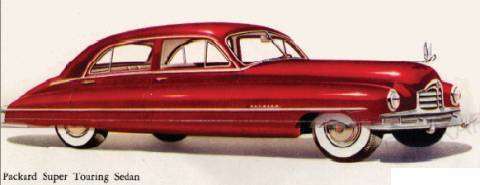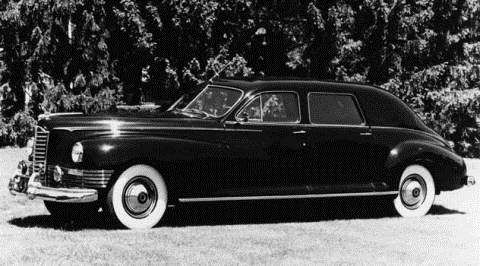|
Re: 1932 - Wood Screws for Doors & Door Jams
|
||||
|---|---|---|---|---|
|
Home away from home

|
Quote:
my Dad, who was a high school wood shop teacher, often used to put a little glue on a wooden golf tee and drive it into the oversized hole. After the glue set he just cut off the protruding section, and redrilled appropriately. I agree. That would work however just some good carpenters glue and a hardwood dowel from Orchard Supply would work as well. It is not usually necessary to completely fill the hole with new wood. By no means use longer screws. Longer screws are not necessary. Also a note about the screws: Good quality replacement screws are no longer available. All are inferior copies from China and other great places. Tumble your screws in a rock tumbler for one or two days with kerosene. You will be amazed how beautiful they will be. They will look new.
Posted on: 2011/4/7 18:57
|
|||
|
||||
|
Re: 327 Manifold Gaskets
|
||||
|---|---|---|---|---|
|
Home away from home

|
I have had similar problems with the gaskets that are the same on both sides with a metal core. Of corse the correct torque is very important as well as to re-torque after the engine has been warmed up and run a wile. Also checking the manifold for flatness and re-surfacing if needed is important.
The best gaskets are the ones that are metal on one side and gasket material on the other. The problem here is that the intake/exhaust manifold is very long and expands and contracts every time you drive the car by quite a bit. The manifold scrubs back and forth and wears into the gasket destroying the gasket thus causing leaks. The gasket with the metal on one side provides a surface That can take the constant rubbing without deforming. The metal goes towards the manifold. Bottom line is I don't use the gaskets unless they are of the type that has metal on one side. surfacing
Posted on: 2011/4/3 21:11
|
|||
|
||||
|
Re: Glovebox color
|
||||
|---|---|---|---|---|
|
Home away from home

|
Sorry to break in on your thred but I have a question. I wanted to reflock the rear speaker grill but gave up trying to find flocking. Most people I asked just looked at me with a blank stare. Couldn't find anyone that knew what I was talking about. Can you or anyone tell me whare I can find flocking?? Thanks
Posted on: 2011/4/3 14:16
|
|||
|
||||
|
Re: Installing pusher fan?
|
||||
|---|---|---|---|---|
|
Home away from home

|
Quote:
The fact that the radiator in your car is not puking out any coolant pretty much rules out overheating or at least rules out any overheating that would be considered detrimental. Why doesn't everyone just learn and accept this and get on with it? It's a good thing Packard didn't have tire pressure gauges inside the car for you to look at. Then on a hot day when the tire pressure increased you would all be heading for the side of the road to let out some air. Just think of all the explanations as to what is wrong with your tires you would receive.
Posted on: 2011/3/18 20:57
|
|||
|
||||
|
Re: Installing pusher fan?
|
||||
|---|---|---|---|---|
|
Home away from home

|
Quote:
has anyone sourced a lower tempurature thermastat for these cars? that would circulate the water faster. I would think by now with all the talk on here about thermostats and overheating that the suggestion to install a lower temperature thermostat has been proven useless. You should know by now that the thermostat sets the low limit not the high. Putting in a lower temp thermostat will not help the problem indicated in the original post.
Posted on: 2011/3/16 17:41
|
|||
|
||||
|
Re: Vapor lock poll
|
||||
|---|---|---|---|---|
|
Home away from home

|
I've had a similar problem with the 51 that I associated with vapor lock. Not really sure at this point. In very hot weather(90+) the engine would die after sitting through a red light. It would die after crossing the intersection. Sometimes half way down the block. Most of the time if I just kept my foot in it it would pick up again. It would be dead, just like the ignition was shut off, for maybe 4 to 6 seconds. If I pulled over and let the engine stop turning it wouldn't start again. Would have to wait 2 to 3 hours for the thing to cool off. Then it would start right up. I didn't really think this was vapor lock. Did replace the coil with a new one. That didn't help at all. Have had intermittent coils before.
The car still does this on really hot days. I do have all the heat shields in place as well as the insulating washers and gasket on the fuel pump and the insulating gasket under the carb. Had the fuel pump professionally rebuilt. Gas lines are original and properly run and the heat riser is functioning correctly. The timing was checked. The water temp isn't particularly high when the problem occurs. Any suggestions?
Posted on: 2011/3/12 15:52
|
|||
|
||||
|
Re: 1951 Master Cylinder Removal/Installation
|
||||
|---|---|---|---|---|
|
Home away from home

|
Quote:
It turns out that the front nut WAS welded to the inside of the frame (thank you Packard); the rear nut was not. Maybe the rear nut was also welded at one time and was broken off. The rear nut may have been a replacement.
Posted on: 2011/3/8 23:26
|
|||
|
||||
|
Re: 1951 Master Cylinder Removal/Installation
|
||||
|---|---|---|---|---|
|
Home away from home

|
This is a very strange conversation to me. It's been about 5 years now but when I acquired my 51 300 one of the first things that needed attention were the breaks. Remember the hydraulic parts were all readily available. Seems the,new not rebuilt, master cylinder cost about $50.00. Slapped it right in without any problem. Can't remember any problem with the bolts. Was installed from underneath the car. I'll have to go out and look at it again.
Posted on: 2011/3/8 14:40
|
|||
|
||||
|
Re: 1950 Packard 288 Auto overheating HELP
|
||||
|---|---|---|---|---|
|
Home away from home

|
Quote:
please tell me at what temperature I should pull off the road ? 250? 280? Assuming I can I would say when it boils over. From what I have read in this thread that has not ever happened. If I remember right the pressure cap is rated at 7 pounds. Also if my memory serves for every pound pressure the boiling point of the water is raised by approx 4 degrees. That means that the water will not boil until it reaches around 240 degrees.
Posted on: 2011/3/2 14:54
|
|||
|
||||








